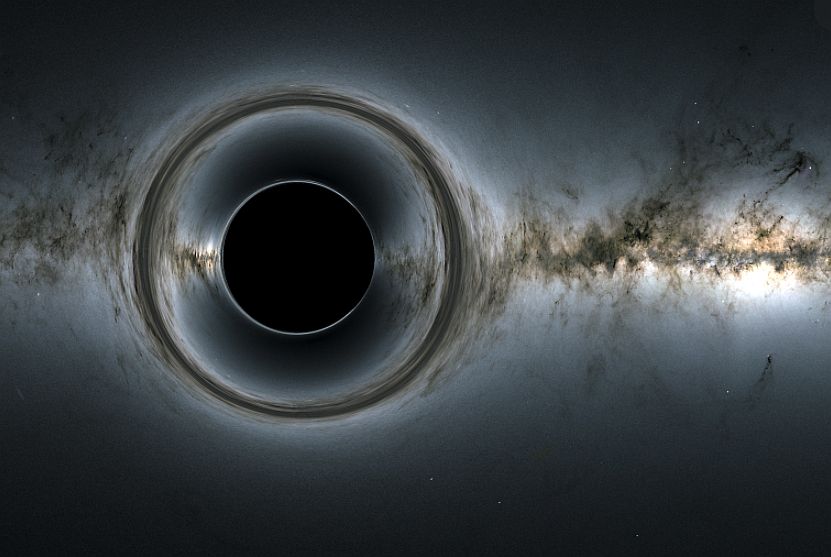
Big question regarding the formation of black holes and how they grow under different regimes have always been the holy grail for astrophysicists.
Our galaxy hovers around a massive black hole which, under normal circumstances, is surrounded by spinning gases. Not much is known about these gases, however, some shine brightly, with an unceasing supply of fuel. While others go to a state of temporary dormancy and erupts again later with an influx of gases.
Astrophysicists are still trying to figure out how gas move steadily and continuously through the universe to feed the black holes. A mystery that is yet to be solved.
UConn Assistant Professor of Physics Daniel Anglés-Alcázar said that black holes play an important role in the evolution of galaxy. And understanding what leads to their growth and presence at the center of a galaxy is the first step to gain an insight as to how galaxies evolve.
Prof. Anglés-Alcázar tried to address the issue with the help of some high-powered simulations. Although he admitted that it is a challenge to study the gigantic forces and factors that are connected simultaneously in massive black holes.
Galaxy formation
Random disturbance occurs in the halo of dark matter and this turbulence is powerful enough to dominate the mass and gravitational potential in the region. Gradually, it starts to pull in gas from its surroundings and eventually, galaxy formation begins to occur, said Prof. Anglés-Alcázar.
Dense gas is also responsible for creating stars. Universe is a huge expanse of dense gaseous state or the stars. Nevertheless, some stars move towards the center of the galaxy to feed the black hole. How the progression of stars towards the black hole is made is still unknown. Some ultra-massive black holes, also called quasars, require huge quantities of gas, they have the capacity of engulfing nearly ten times the mass of the sun in one year.
This baffles the scientists they still have no clue how galaxy produces such enormous amount of gas to its center consistently.

Exploring different processes
As per the new simulations, quasars are able to rope in massive amount of gas due to the powerful gravitational forces from stars. The force is strong enough to warp and destabilize the gas across scales. This disruption leads to adequate gas influx to fuel a luminous quasar.
To capture an accurate picture, major physical processes that influence how the galaxy evolves were incorporated into the simulators. Some of them were:
- hydrodynamics of gas
- its progression under the influence of pressure forces
- gravity
- concatenation reaction from massive stars
- momentum injection by supernovae
- energy and influence of supernovae during explosion

Takeaway
Current study is an extension of the previous work from the FIRE (“Feedback In Realistic Environments”) project. Other research focuses on what’s happening at the proximity of black hole. However, Prof. Anglés-Alcázar’s simulator takes a wider perspective into consideration. For instance, it also incorporates the overall environment around the galaxy during the formation of black hole. Since, he thinks, its important to connect all the processes in entirety to reach a final conclusion.
The computing power is similarly massive. After all, for the first time, scientists are able to capture the full range of scales in a single model.
He also added that to understand large statistical populations of galaxies and massive black holes, not only the active galactical processes are to be studied but also the dominant physical mechanisms are to be understood. Different conditions act as various parameters that certainly will contribute towards the understanding of the formation and evolution of black holes.



